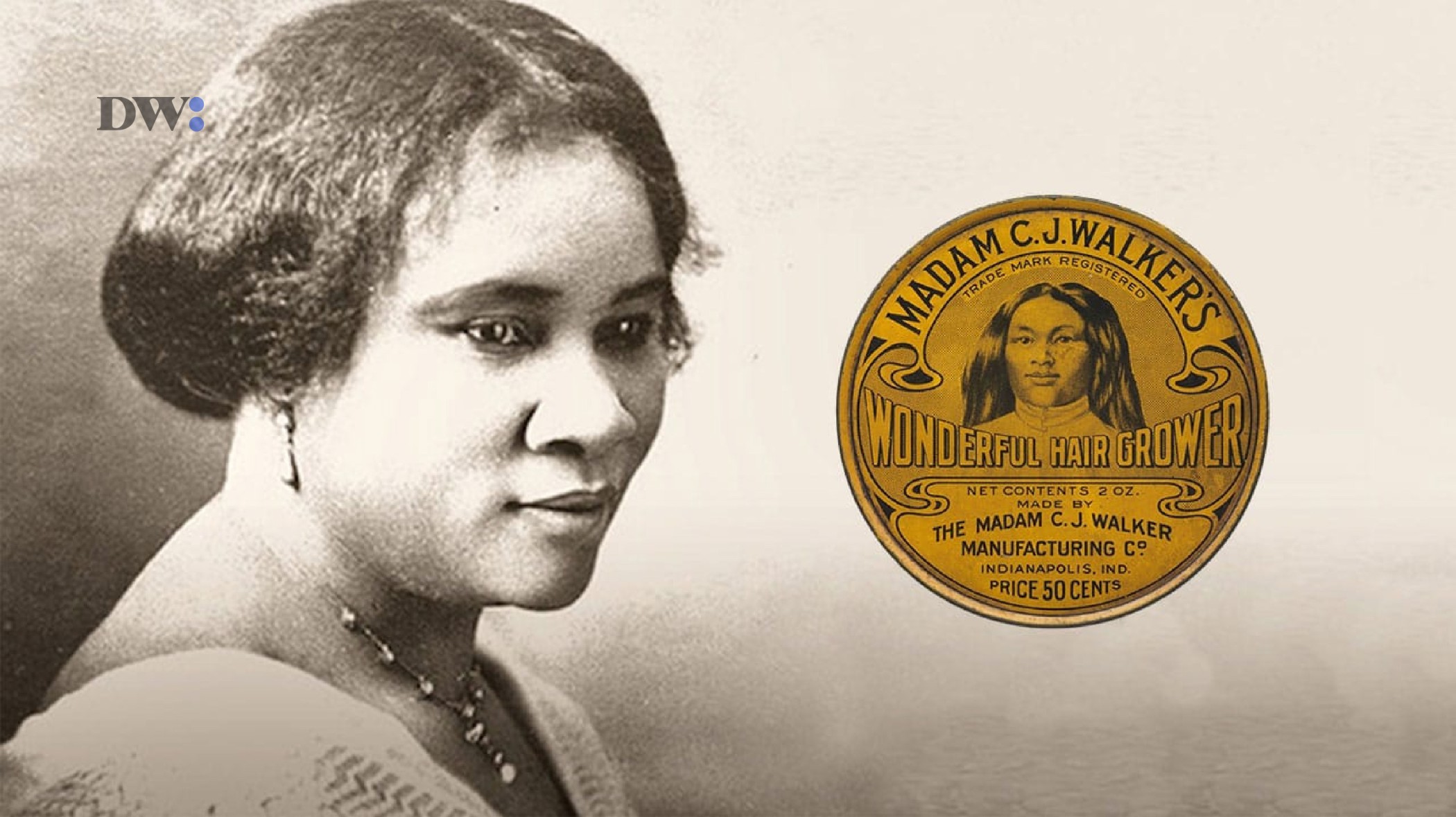As Black History Month ends, we draw the curtains to the celebrations of the noteworthy Black woman by sharing the story of a truly phenomenal woman.
Our Iconic woman for the week, Madam CJ Walker, was the first African American woman to become a millionaire in the United States. She was a philanthropist and businesswoman.
Sarah Breedlove (Madam CJ Walker) was born on the same cotton farm where her parents, Owen and Minerva Anderson Breedlove, had been enslaved before the American Civil War. She was the first child in her family to be born after the Emancipation Proclamation. At age seven, she became an orphan.
According to a profile on Madam CJ Walker from Britannica, At 14, she claimed to have married Moses McWilliams to flee the mistreatment of a “cruel” brother-in-law. After her older brothers became barbers, she relocated to St. Louis, Missouri, as a 20-year-old widow with a small girl.
After more than ten years of menial labour as a washerwoman, she joined the choir at St. Paul African Methodist Episcopal Church, where she received guidance from National Association of Coloured Women members and teachers. She experimented with several commercial Hairdressings and started tinkering with her remedy to treat baldness-causing scalp infections. She was a sales representative for Annie Turnbo, the Poro Company’s creator, for almost two years. She moved to Denver in 1905 and worked as a chef for a scientist. It was there that she picked up the fundamentals of chemistry and went on to create an ointment that treated common hygiene-related disorders like dandruff.
She married Charles Joseph Walker in 1906, and together, they started a local success story that would eventually be dubbed the “Walker Method” or the “Walker System of Beauty Culture.” She went by Madam C.J. Walker from then on.
Following two years of instruction, Walker agents and “Culturists of beauty”, Walker and her husband relocated to Pittsburgh, where she founded the Lelia College of Beauty Culture, a school bearing her daughter’s name, after travelling throughout the southern and eastern regions of the country. Attracted to the thriving Black business scene in Indianapolis, she moved the Madam C.J. Walker Manufacturing Company’s headquarters there in 1910.
As she travelled throughout the country, she expanded her business, giving hundreds of African American women—who would have otherwise been forced into labour as maids, cooks, laundresses, and farmhands—career options and financial independence. Her travels abroad began in 1913 when she made stops in the Caribbean and Central America. She claimed 25,000 active Walker sales by 1919.
Particularly noteworthy were her contributions of $1,000 to the construction fund of the African American Young Men’s Christian Association (YMCA) in Indianapolis in 1911 and $5,000 to the anti-lynching fund of the National Association for the Advancement of Coloured People (NAACP) in 1919. In addition to providing funding for orphanages, retirement communities, and the fund to maintain Frederick Douglass’s house in the Anacostia area of Washington, D.C., she also awarded scholarships to students attending several Black institutions and boarding schools. She also got involved in politics, speaking out against lynching in 1917 during a visit to the White House and at the Negro Silent Protest Parade. She also supported the rights of African American soldiers who had fought in France during World War I.
She left behind many properties, including Her Harlem townhouse, which served as both the location of her New York beauty school and the Dark Tower, a cultural salon hosted by her daughter A’Lelia Walker during the 1920s Harlem Renaissance, and Villa Lewaro, her mansion in Irvington, New York, which is now a national historic landmark and a National Trust for Historic Preservation national treasure, were among her astute real estate investments. Walker bought land in downtown Indianapolis before she died in 1919, and the Madame Walker Theatre Centre, another national historic landmark, was established there in 1927.

Leave a Reply